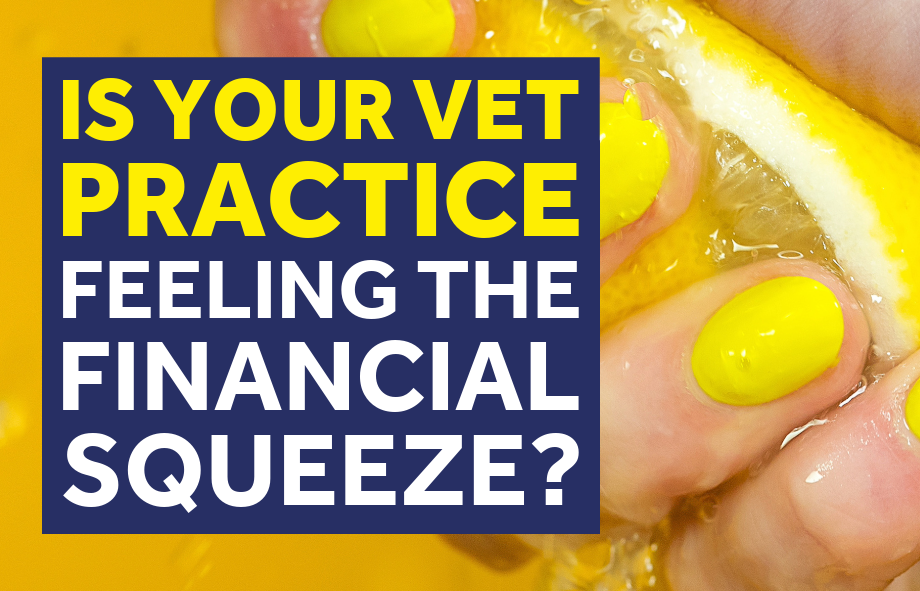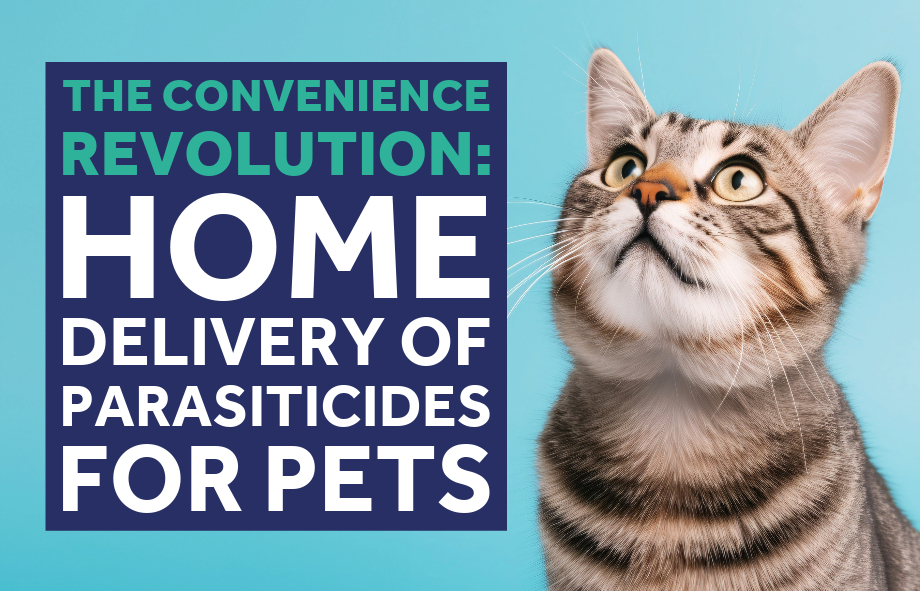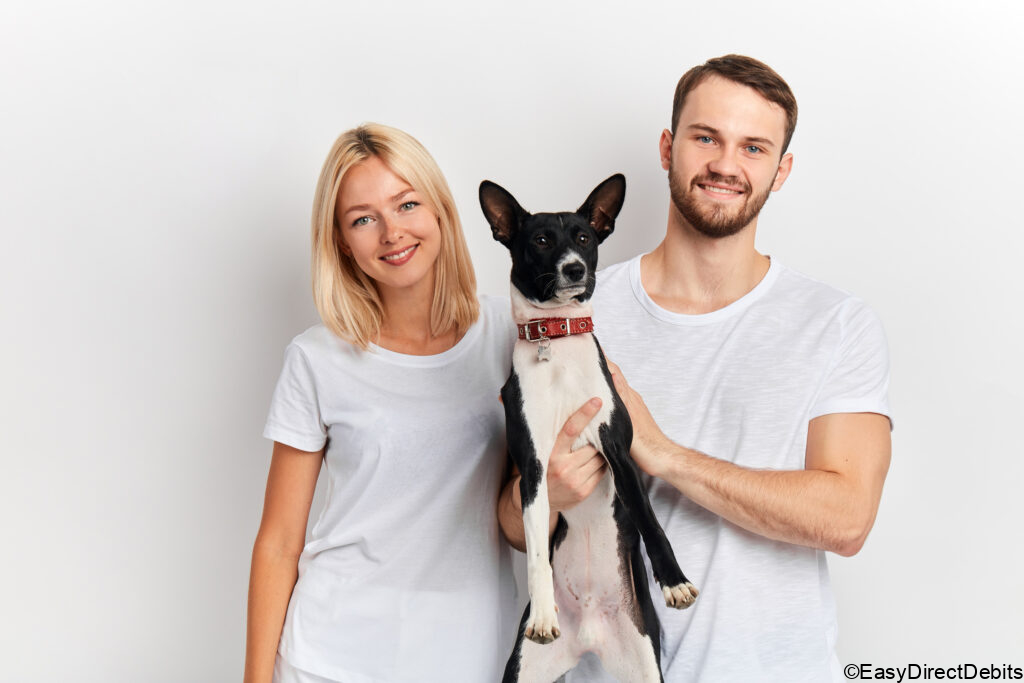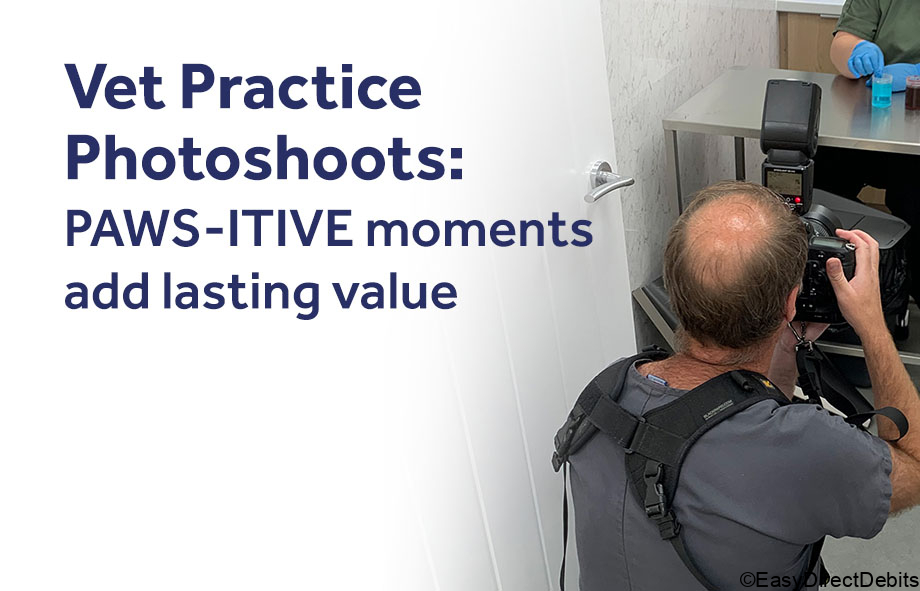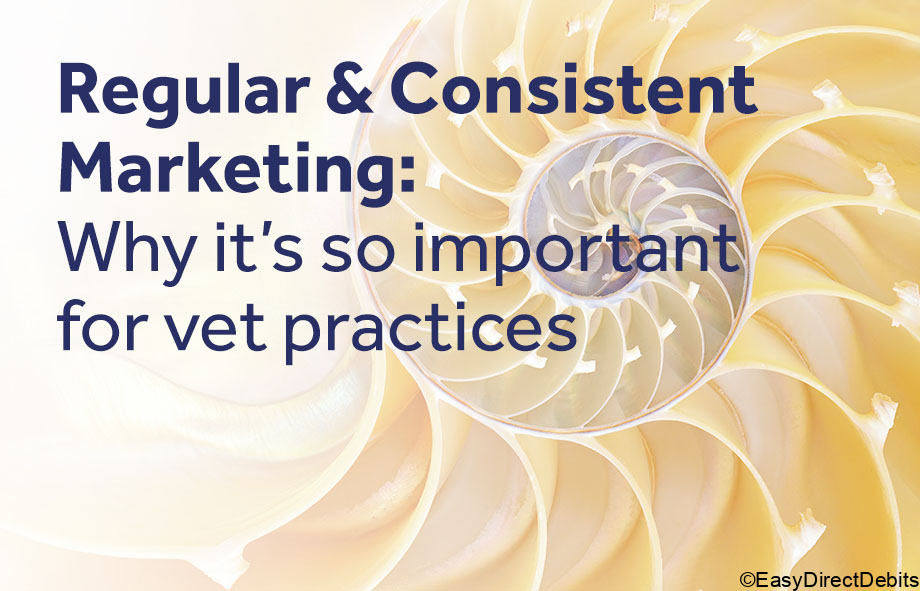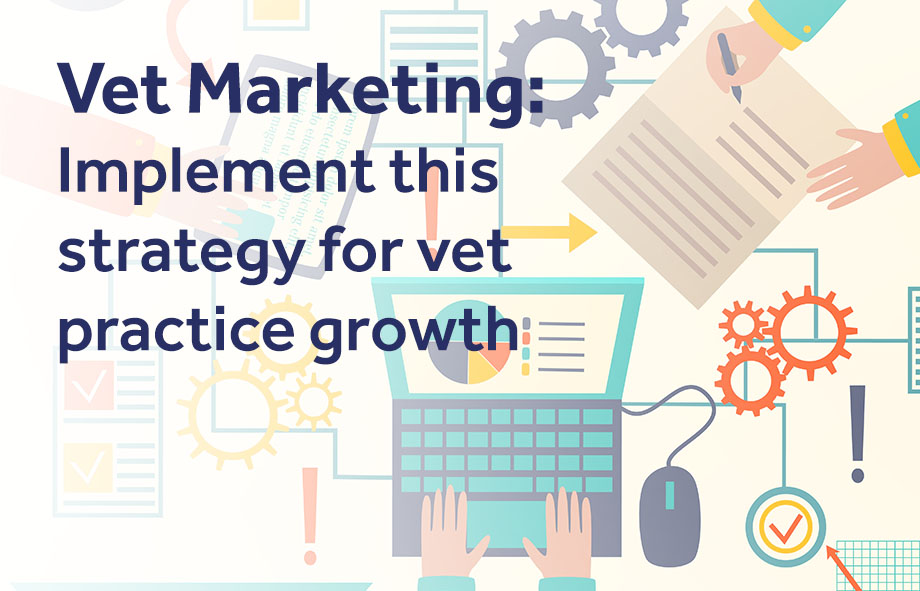Your logo is an essential part of your practice’s brand and your marketing. It’s the single most obvious visual representation of your brand. Your target market will come across it at every touchpoint, and it will be used in advertising, online, in the practice, and on any printed materials.
A well-thought-out and designed logo is a critical part of any practice’s brand and marketing strategy, but to work as an ambassador for who you are and what you represent it needs to be the outcome of a wider branding process. If you’d like to rewind a few steps to complete this before thinking about logos, see our previous blogs on building a strong veterinary practice brand.
Like it or not, your logo operates as a sponge. All of the information people collect about the brand – all the positives, negatives, history, their memories, the messages they come across – all get stored in this one visual image. It serves as the face of the practice and in one tiny space, your logo needs to represent your core values and unique identity through choice of design, font and colour. Your practice brand will act as the key reference for colour choices throughout the practice, online, and in any other printed materials.
How do I even begin to design something this important?!
Don’t do it yourself – employ a real graphic designer to help you.
We’ve had some vet practices approach us who have asked an artistic friend or colleague to design a logo for them in the past and have subsequently spent large amounts of time and money trying to bring it up to date. Their logo is often one that has been with the practice since a partner designed it many years ago, and has remained their logo since.
Understandably, colleagues are reluctant to start that awkward conversation and suggest a change, but as much as a well-designed logo can represent your own carefully thought out brand values, a sub-standard one will just as quickly suggest amateurishness and a lack of attention to detail and could repel potential customers.
Your clients and potential clients are a group of people who are increasingly being exposed to the simple, clear corporate logos of competitors and are making fast decisions based on what is implied by what they see.
You don’t need to look like a corporate, but you do need to look professional and competent.
It’s impossible for any other media to convey these messages (website, literature, signage etc) if your logo looks outdated and unprofessional.
If you are about to start rethinking your vet practice brand, follow these 7 key rules…
The 7 key rules you should follow are:
1. Keep your brand firmly in mind
If you’re reading these blog posts in order, you should already have a good idea of what makes you unique and what makes you YOU. Having a strong idea of this will help ensure your logo effectively represents that. But remember this is lateral not literal – don’t use it to describe what you do, use it to describe what you want that memory sponge to hold. Caring, gentle, technically up to date… whatever your brand feel is.
2. Keep it simple
If you look at some big, strong brands compared with some smaller ones you can quickly see how important this is. The more noise there is in your logo – colours, fonts, lines, text, gradients, shapes etc – the less professional and the more amateur you’ll look. Many successful logos use a simple word mark and strong, simple colours:
3. Match it to your business
You’re a caring service provider to pets and their owners. Does your logo say anything about that? To get an idea of how important simple things like the choice of the font are, try writing your business name in a Disney brand style. This is clearly geared towards children and relaxed times.
4. Ensure it’s versatile enough to work where its placed
Is your logo going to work on business cards, uniforms, on phones, on the website, like a square icon on social media, in publications printed on low-quality paper such as any local papers you advertise in? It needs to have mass appeal and be clear enough to stand out and be seen.
5. Keep mottos and taglines under seven words
If you’re going to include a tagline you should try to ensure it fulfils as many of these as you can:
- Simple
- Memorable
- Include a key benefit
- Differentiate the brand
- Makes people feel positive about the brand
6. Who Are You Talking To?
After doing your buyer persona exercise, you should have a pretty good idea of your target demographic. Does your logo appeal to them? Are you dealing with an older, more traditional demographic who would be put off by something sharp and technological looking? Do you have a very masculine logo despite 80% of your target clients being female?
7. Make it different, make it strong enough to captivate, make it memorable
People are designed to notice the unusual, and things that resonate with them in some way.
Different is memorable
If someone does something unusual whilst you’re walking down the street, you’re more likely to remember what they look like or what they were wearing than the same details for anyone blending in by being normal. Think of your logo in the same way.
How much should I involve everyone in the practice on the decision?
Making your staff feel included in the development of the company they work for is a vital part of your internal marketing, and these people will feel a lot of things about your brand and your logo already so are a great group to include in the consultation process.
It’s really important that people understand WHY change is about to happen.
It’s important to keep in mind that many people are scared of change – and the process of change – so may well give negative responses for this reason alone.
They love their job and the way things are and think a big change will only have a negative impact on them.
Choosing the stages of involvement is the key to harmony and success here.
You’re opening yourself up to ‘death by committee’ if you ask people to pick a final concept – consultation processes are rarely quick, and you really can’t please all the people all of the time.
There will always be someone who hates the logo you end up with.
They might then hold on to some resentment if everyone else over-rides their views, so you need to be prepared for this eventuality.
A clear way forward is to explain why your vet practice brand needs revitalising and the benefits this will bring, taking all your positive points and using them for onward growth.
Doing this at the very beginning whilst combining with an initial branding exercise will help your colleagues (and you) discover how they feel about the practice and your overall brand.
The results of this discovery phase will help professional designers to create a range of logo concepts that the management team (not everyone involved in the initial discovery phase) can then make some decisions on.
Be consistent with your visual identity
Once you have your amazing new logo that shouts out all the things you do and represent, it’s critical to ensure everything around it is consistent.
Your logo is reflected in other visual areas of the practice marketing collateral and online, but however well-designed it will never look good when surrounded by slightly different colours, varying similar-but-different fonts, and various quality items.
Whilst you’re going through your logo redesign process, start making an inventory of all the places your practice logo and colours are used and plan a roll-out schedule for the new logo. Places to look will include:
- Reception décor
- Furniture
- Uniforms
- Name badges
- Signage – external and internal
- Printed collateral including stationery, leaflets, welcome packs, appointment cards, posters, notice boards, compliments slips, business cards
- Online – website, email signatures, social media, online advertising
BE CONSISTENT. Nothing says you don’t care more than the details being ignored, and after all your work getting to an amazing new logo, not caring isn’t something you want to be stored in people’s brand sponge.
There's no better time to perfect your vet practice branding
Photo by Balázs Kétyi on Unsplash

